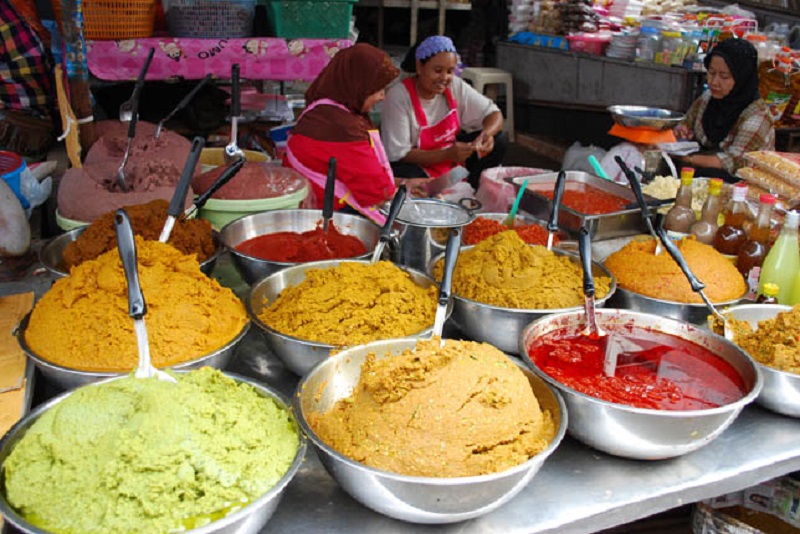The endless combinations and fresh taste make curry a popular dish. But what exactly is Thai curry? There are dozens of different types of curries in Thailand varying by the use of various types of curry pastes, the addition of coconut or water and different combinations of meats, herbs, vegetables and fruits.
By:Tingting Chen 130306149 Class 1
In Thailand, curry is usually a soupy dish consisting of coconut milk or water, curry paste and meat. Curry will be classified by color like red, green, yellow, and so on. The most well-known curries are Panang and Massaman.
Panang curry paste usually has more dried spices in it then Red curry paste; but it is always up the cook; the real difference between these curries is in the preparation; panang is a dry curry prepared with coconut cream compared to red curry which is a more soup curry. Massaman curry paste can be used to make massaman curry — a popular Muslim-style curry from southern Thailand. A heavy granite mortar and pestle is particularly useful for bringing out the full flavor of the spices when making this curry paste.
The curry dishes of Thailand have no direct equivalent in Western food, making it hard to translate exactly how to serve and eat curry. Curries are eaten spooned over plain steamed jasmine rice or round rice noodles. This helps to cut the heat and the intensity of the flavors. To eat curry as we eat normally eat soup in the West is inappropriate because curries are packed full of intense spices, herbs and hot chilies. Diners normally share a bowl of curry which is accompanied by dishes with mild, salty, bitter and sweet tastes.
Thai curry some like it hot, while eating curry is, for many, highly desirable. It is a sort of addiction once you eat curries on a daily basis for about a month. Gradually your tolerance for spicy food increases to an incredible level you never dreamed possible!
If you like milder curry, simply omit the fresh whole chills or add less curry paste. Another excellent hint is to first cook the rice and allow it to cool to room temperature, making it easier to eat spicy foods. The plain rice also offsets the spiciness of the curry. Reputedly there are many health benefits from eating chili peppers, including high Vitamin C content and increased metabolism rate.
Thai curry is not the same as Indian curry. Thais cook their curry dishes for a much shorter time and use more fresh herbs and garlic and fewer dry spices then in Indian curry. Thai curries in general also tend to be more soupy then Indian curries. The only two curry dishes in Thailand that are based mainly on dried herbs and spices, rather than fresh ones, are Massaman and Panang curry.




